Diversity, Equity and Inclusion: Our Journey So Far

Written by Ruth Argyle
Ruth has been a teacher for 16 years and in her most recent role in ITT at KNSTE she is responsible for leading their Diversity, Equity and Inclusion focus.
Keele and North Staffordshire Education (KNSTE) began a journey of reflection, education and improvement in relation to DEI around 12 months ago. Back in the day we were all a little unsure of online working and when cameras were glitchy, backgrounds were chaotic and we all left ourselves on mute regularly. I then had the absolute pleasure of seeing Hannah Wilson of Diverse Educators speak at a NASBTT online conference. I was immediately and irreversibly inspired by her words. As an organisation we had taken our eye off the important issues that Hannah spoke about and it was time to refocus.
The timing couldn’t have been better. We rewrite our KPIs around March and this gave our work the impetus it needed to have real impact. We thought long and hard, consulting with many of our stakeholders about how best to concentrate our efforts in this area and we decided on three drivers for change:
- Marketing and Recruitment
- Our Curriculum
- Associate Teacher (AT) Experience.
We have been ambitious with our plan and have decided on working towards sustainable, internal change that will have impact for years to come whilst being mindful of resisting quick fixes that may ‘plug a gap’ but do not have long term impact. We didn’t want to buy in someone to deliver a one-off session for us, we invested in our staff and this involved a lot of CPD and big learning moments together. It may seem simple but even just deciding together on what order the letters in the acronym would go was significant. In the early days of this project we would use all manner of combinations of the letters: EDI, DEI, IDE… and would hear it said differently at different events and training we went to. Also, sometimes the E stood for Equity and sometimes it stood for Equality, sometimes people meant the D to mean Diversity, other times people were actually talking about Disability. We needed a shared language to ensure we had a shared understanding on what we were trying to achieve.
We worked as a team to collectively improve our understanding of the terms and what we could be doing as an initial teacher training and education (ITTE) provider. We have many responsibilities; responsibility to the trainees we train each year, a responsibility to the partnership schools and the employing leaders in those schools, a responsibility to the children in those classrooms and indeed a responsibility to the profession as a whole. It was and continues to be scary at times but to quote Hannah “we needed to get comfortable feeling uncomfortable” and work through it as a team. As public professionals we feel the weighty responsibility of creating a culture of belonging in our profession. We are mindful of the Equalities Act 2010 and the 9 Protected Characteristics and will work tirelessly to ensure that there is a place for everyone in our profession.
In the last 12 months we have made many positive changes. We have set up affinity groups for our alumni, training our Teacher Educators about DEI and our expectations of them when hosting a trainee, being more aware of our marketing and recruitment processes to consider elements such as neurodiversity and inclusivity and these are all having an impact within our organisation. Despite this good work we are advocates of the notion that we are lifelong learners. We know without doubt that there is more learning to be achieved, more work to be done and more improvements to make so that everyone who comes into contact with our organisation feels that sense of belonging which we are striving for. As we enter Year 2 of our 3-year action plan we are hopeful for continued impact and improvements and will continually self-reflect and be outward looking to achieve this.
Be A Light In The Spaces You Occupy
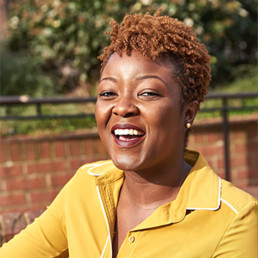
Written by Ayo Awotona
Ayo Awotona specializes in confidence building for girls in education. She does this through programs, workshops, and keynote speeches.
One of the great aspects of being a servant leader is being a light. It might sound strange but essentially it means having the ability to step into workplaces (physically or virtually) and speak hope, truth, and wisdom. It’s having the ability to help teams see situations with a new perspective and encourage them to have a can-do attitude.
Light is associated with visibility and helps to see things thoroughly, and servant leaders can provide that type of light. We can see things that others may not, such as highlighting why certain areas are not functioning well and cultivating a plan to tackle the problem.
How Can We Be Lights?
There are many ways we can be a light in our working environment and below I share four ways:
- Be perceptive/observant – This ultimately means being able to see deeper than what is on the surface; finding what systems are working or not and why, seeing how to implement new changes and reinforce what is already working well, etc.
- Be strategic – This definitely takes teamwork to brainstorm and create effective strategies to help run programmes, projects, or systems more smoothly.
- Spread hope – We can bring reassurance to others and brighten up the atmosphere by simply being hopeful and positive, reminding them of the vision and goal of the organisation/school.
- Embracing our individuality – Before being servant leaders, we are human with our own character traits and personalities. We can become more relatable and connect better with our colleagues/others because we come as ourselves.
What’s The Significance of Being A Light?
You might be wondering why it’s so important to be a light? Well, to give an illustration, we know there’s a stark contrast between darkness and light.
Imagine living in a house that is dimly lit for a whole week, and when the lights get fixed, everything becomes so much brighter and clearer. Similarly, we can be a light in dimly lit situations and see things through a new lens to help make what was ambiguous clear.
Many of us have experienced other people being lights in our world, maybe our mums, a friend, a mentor, etc. They brought hope, warmth, or made things visible that were not clear to us.
In Conclusion
In one way or another, all of us have the capability of being a light in each others’ lives. Specifically, in a working setting, servant leaders can be a light to spread hope, encourage change where necessary and bring new perspectives to improve overall work efficiency and efficacy.
How colourful is your staffroom? Recruiting, retaining and supporting the careers of ethnically diverse teachers
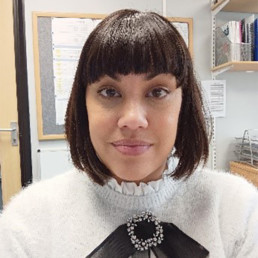
Written by Caroline Lowing
School Improvement Lead for HISP Multi-academy Trust. She was previously a Deputy Headteacher and has worked in Secondary education for 18 years. Caroline co-chairs the ASCL Ethnic Diversity Network and sits on Council for the South East of England. Caroline aims to be a Headteacher in the next 2 – 4 years.
Recently me and my colleague, Gurpall Badesha, presented to a room of school, college and trust leaders at the ASCL Conference on Recruiting and Retaining teachers of colour.
We hugely enjoyed the experience and got some great feedback but that wasn’t the best thing about it. The best thing was that most of the people in the room were white.
Since becoming co-chair of ASCL’s Ethnic Diversity Network I have really tried to carve out the time to be more informed and involved with the ED&I agenda and all of the fantastic organisations out there. I’ve attended meetings and webinars, I have had so many energising conversations and met so many inspirational people.
Even in the short time that I have been involved in this work I have noticed a big change. It is no secret that statistics around the recruitment, retention and career progression of people of colour in education are woeful. The DfE have reported that, in 2019, 85.7% of teachers were white with a staggering 92.7% of headteachers were white. Every way that you look at it, education has a big problem.
However, these statistics and what they mean for the young people that we serve can sometimes stop us in our tracks. The need to delve deeper and deeper into the implications is often overwhelming. I completely understand that we need to be heard and we need to share our own lived experiences. Goodness knows that I have told my own story many times and personal stories about, for example, being repeatedly mistaken for a teaching assistant when you are a Headteacher, are incredibly powerful.
The issue is that, often, the conversation will only go this far. The recent transformation in ED&I in education has been around what can actually do to enact change. This is why I was so pleased to see so many white school leaders in our session. These are people that want change and they want to learn how they can make that change from their position of relative privilege.
Providing solutions is hard. Coming up with ideas that work within every context is impossible. However, the magnitude of the problem coupled with the constant feeling of getting it wrong has led to a feeling of helplessness. When we shared ideas in our session, such as approaching parents from ethnically diverse backgrounds on the school gate to apply for governor roles, it was a joy to see people scribble it down to take back to base. Equally, it was wonderful to hear about schools that already have effective practices. For example, one school tracked its alumni through university and then approached students of colour to support them through joining the profession. I was frantically scribbling, then.
There is absolutely a lot to do to improve the recruitment and retention of people of colour in education but I am genuinely optimistic about the future, not least because school leaders on a mission get things done!
If you would like to know more about ASCL’s Ethnic Diversity Network then please contact Caroline at c.lowing@hispmat.org or she is on Twitter @caroline8779
Making the DEI mission of your school mean more than just words.
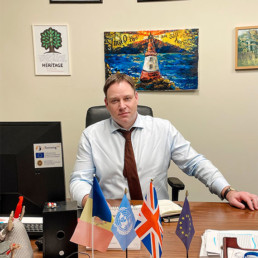
Written by Rob Ford
Rob is an educator for nearly 30 years, a history and politics teacher, a school leader in various schools in the UK and was principal of Wyedean School in the UK, before being appointed as Director of Heritage International School group.
“Our lives begin to end the day we become silent about the things that matter”. MLK
As my colleague sobbed with frustration and emotion in my room one afternoon, after a long day at school, going through what had just happened in class, I realised in that moment how powerless I felt there and then as a person but I knew how powerful my school’s culture, ethos and policies truly were in these awful moments. More than just words when put to the test to support my colleague as she asked for my help as a school leader.
My colleague, an international teacher, had been on the receiving end of a racist comment and it underlined to me just how much work we still have to do in our schools and communities to ensure such hurtful and offensive moments don’t happen especially when it comes to the words, beliefs and actions of children and young people in our care.
When we found the students responsible and put in place the necessary sanctions & follow up actions warranted, the comment from one parent said this to try and downplay the incident; “It’s like he was at the same table when the waiter was abused but all get thrown out of the restaurant”.
Illustrating perfectly with the choice of words that even the most liberal, educated, wordly wise and enlightened of school communities, especially those with many nationalities and a strong global outlook, need to continue to work together with the whole community, to challenge and change such mindsets. In contrast, the students were actually very contrite, apologised, owned their responsibility and repaired the damage done with their teacher who was prepared to move forward with them on this basis.
We cannot ever be silent on such issues as school leaders, nor should we feel powerless individually to tackle these issues successfully. We need to prioritise clear policies, culture, staff training and meaningful education in schools around issues & attitudes such as racism, nationalism, prejudice and hate that, unfortunately, have become more widespread in the 2020s around the globe. Doing nothing or hoping it won’t ever be something you will have to address is not an option either for any school leader.
Your school culture is not international because it says it in the title.
It is always quite surprising how many school leaders feel that issues around racism will never affect them because they are “an international school”. This is a very false assumption as much as stating how many different nationalities are in the school community. It doesn’t mean a school is diverse, equitable or inclusive and it’s a “lazy assumption” and derelict to avoid having a practical strategy in place because you say you are in the school’s name. Words matter here.
You need a robust Diversity, Equity and Inclusion Policy in place.
Your DEI policy should sit alongside the handful of ones, like Safeguarding, SEND, Teaching and Learning, Complaints, that you have in crumpled paper form, covered in notes and highlighter on your desk as a school leader because they are used as part and parcel of daily school life. There are some really effective, comprehensive and robust DEI policies out there to look at and adapt to your school.
Your DEI policy needs to be regularly reviewed, a governor responsible, a senior leader made responsible for it, and for it to be made publicly available, for your whole community to be aware of it with the key points clear. Get good outside experts to scrutinise it and for them to challenge you as a leader, your governors and your team on it as COBIS did to me and my school last year as part of our standards accreditation.
You need regular CPD for staff awareness and all your team believe and operate in this culture.
I couldn’t imagine annual staff training in August or regular CPD throughout the year, without time spent on our DEI, any more than I would leave safeguarding, the fire drill or Teaching and Learning out of what is central in the education and duty of care towards children. There are some incredible voices and forums out there for schools to follow and engage with and bring that outside expertise and experience to your school. Especially for schools and communities operating in homogenised and monoglot environments. Your DEI policy needs to be even more central in your strategy.
There are some incredible voices and forums out there for schools to follow and engage with and bring that outside expertise and experience to your school so tap into it; for example we have used Jon Gibson and Backdrop Education for staff training around inclusion and equity, America House in Chisinau extensively on diversity training, our governors have worked with Jackie Beard, a NLG and used the DEI programmes from NGA. COBIS have been working with Angela Browne and Hannah Wilson to deliver DEI training in schools and we are signing staff up for this outstanding & highly recommended programme for the courses this year. We also follow Hannah’s work in offering free DEI conferences and webinars to educators in the UK and around the World.
Raise student (and parental) awareness regularly, celebrating and commemorating our global, diverse communities in school daily life.
This is where you need to be prepared to be less than silent, especially in a World of labels thrown at schools such as “woke” or “cancel culture” for daring to celebrate and commemorate events in the global calendar such as Black History Month or Holocaust Remembrance. Do not shy away from what may be perceived as difficult topics or fearful of reactions.
In those school boards in the USA, where some parent groups are challenging schools for holding Black History Month events this February, because they believe it is teaching “CRT” (critical race theory), school leaders are tackling this challenge head on legally as we finally see this “false equivalence” called out and for a many, a hill definitely worth a stand on.
In Eastern Europe, the ugly racism black English footballers endured recently playing Hungary, became a very good debate topic for our IGCSE and A Level students and I was proud to see all of them call it out for the hate and ugliness it was. These are not the values these students want or their part of the world to be associated with.
We also are facing in Eastern Europe the contextual challenge of the conflict of Russia towards Ukraine, with students of both countries in our community, so we have worked with teachers on how to handle difficult questions on it and deal with issues that may arise from students in a safe arena of dialogue. This is the very reason why we educate children.
Make your community more inclusive and diverse.
This should include a recruitment policy that is more than just centred towards white Anglo-American educators and truly brings the global community to your school. I still hear the positive words of one of my students when she said coming to Heritage is like going abroad each day.
The same is about the speakers you have in school, the role models for children chosen and what you study in the curriculum. I have no issue with special days or months for events in the global curriculum calendar because it is a good excuse to highlight the work that is consciously there daily and it is not just for one day.
Schools shouldn’t worry about the odd criticism on social media because you celebrate or commemorate one day either, as long as this isn’t the only time some topics or events are looked at and studied. A “one off” is not a school culture but it is a good starting point to build on. Throughout this academic year, the UN’s #FightRacism campaign has underscored so many wider curricular events especially through whole school assemblies and cross curricular days we have aligned with as a school.
Conclusion.
We should live up to our school’s mission, culture and ethos, especially where we want future leaders to lead with the very values we claim we are about in our schools to young people including diversity, equity, justice and inclusion for a better future. Or as school leaders we will end up remaining silent on what matters most.
Cultural Intelligence

Written by Wangu Chafuwa
As a first generation immigrant, Wangu’s vantage as an insider-outsider led to a fascination in people, social relations and culture, which led to advocacy work with the British Youth Council. Wangu now uses his social consciousness and anthropological perspectives to bring human centred insights to the world of work.
Culture – and how we move through it – has also become one of the tabloids’ favourite news beats. How often do we see articles bemoaning the rise of cancel culture or so called culture wars? It’s understandable why lots of us feel nervous about approaching culture.
Even in itself culture is a difficult term to define. The Oxford English Dictionary contains 6 distinctly separate definitions of it: ranging from ‘the civilization, customs, artistic achievements, etc., of a people’; to ‘the artificial development of microscopic organisms, esp. bacteria, in specially prepared media’; to ‘the training, development, and refinement of mind, tastes, and manners’.
Culture is one of those funny little terms we all vaguely seem to understand but struggle to pin a precise meaning to. Which poses a problem as we’re routinely expected to navigate increasingly complex cultural environments.
It’s the reason why Cultural Intelligence (or CQ, like IQ) has been described as one of the essential leadership skills of the future. But how well do we understand what that really means?
There’s a phrase that’s probably misquoted to Einstein that says ‘intelligence is not the ability to store information, but to know where to find it’. Often when people hear Cultural Intelligence they think that it means having an itinerary of do’s and don’ts for cross cultural
interactions. Having this knowledge is obviously helpful, but the thing about Cultural Intelligence is that it is a practice – it has to be applied.
“But how?”, I hear you utter in anguish from beyond the screen.
In his 2011 book, “The Cultural Intelligence Difference,” Dr David Livermore highlights four capabilities to develop to effectively practise Cultural Intelligence:
CQ Knowledge relating to knowing different cultural expectations and the nuances of intersectional cultural expressions.
CQ Strategy relating to your ability to plan and prepare for multicultural interactions.
CQ Action relating to how appropriately you adapt your behaviour to accommodate different cultural contexts.
CQ Drive your interest and motivation to keep finding out more about different cultures.
Cultural Intelligence is the acknowledgement of the fact we all come from different places that hold deep meaning to us and a respect for how this shapes our individual perspectives. No one wants to be treated in aggregate. Practising Cultural Intelligence allows us to see people in their rich difference rather than one in an anonymous blob.
Our struggle to get to a singular definition of culture isn’t a failure to express, it’s a representation of the living, transforming and always shared experience that is culture.
We can see this buzzing diversity inherent in culture in the sheer number of different cultural expressions living around us. In all this contrast and colour is an infinity of possibilities. And the ever-present potential of friction.
The capabilities underpinning Cultural Intelligence may sound a bit jargony but luckily underpinning them is an innate capability to navigate our inherent differences. We are social creatures – all possessing empathy muscles that hardwire us to build bridges between us.
Is your DEI team an unhealthy microcosm of your school or organisation? How you can journey through and learn from the process, in order to inform your future practice.
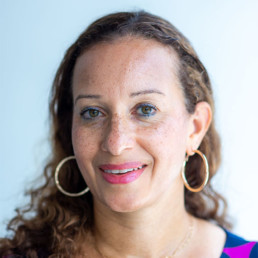
Written by Caroline Davis
Caroline Lucy Davis, International English Teacher & Diversity, Equity and Inclusion Advocate with a particular interest in the intersection of gender and race.
This article, which was presented at the AIELOC (Association of International Educators and Leaders of Colour) online conference 2019, discusses my experience of working on DEI initiatives where there was evidence of clearly inauthentic and tokenistic practice to achieve certain targets and tick box exercises. My journey is one of discovery to disruption to learning and exiting one educational organisation’s version of cultural relations and DEI work.
I became a member of my organisations DEI team and discovered a fractured, non-communicative, barely functioning group receiving very little guidance. If I examine my reasons for seeking out the team at the time I did, it is really quite simple and why others may do the same. I was struggling with certain issues surrounding gender in particular and I wanted an outlet. I would later learn that I was certainly not alone in my experiences. My experiences also resurfaced my long-term interest in social issues and experiences of marginalisation. I found the lack of initiative and direction of the DEI team very infuriating and was keen to move things forward.
So I found other ways to impact DEI initiatives through external volunteering opportunities sometimes connected to the organisation. I joined local and expatriate women’s groups, ran International Women’s Day events and was involved in a Global Race and Culture Working group. I networked internationally and it was this extending of my circle which was very enlightening and liberating for me. After quite some time of learning and leading more these initiatives, as well as feeling frustrated by the lack of movement on issues, I became lead for the DEI team. Excited, I threw myself into my new shiny (unpaid!) role in an area that I felt passionately about.
I researched and thought carefully about how I would establish a representative team and one that would work on the areas of EDI that mattered most, and were most pressing to the staff. My team was going to be functional and effective! I read about how to have inclusive meetings and communication, as I had been long-term recipient of the opposite at the organisation. I had become used to hearing the same old dominant voices and seeing the same old faces…those faces that were all so similar to one another.
Working conditions did not make communication, meetings, organising events or initiatives easy, and then there were the office and organisational politics. Despite the challenges and we had some successful, if with less attendance than hoped, events and initiatives.
At the same time, the idea of a microcosm became apparent to me when discussing issues even within the EDI team. We just did not seem to have the same understanding or experience of things. Could the EDI team, as representative of the wider organisation, be part of the problem? I indeed found clearly inauthentic and tokenistic practice to achieve certain targets and tick box exercises and even found my work accredited to someone else.
After delivering a presentation on racism in the UK and the lack of people of colour at senior leadership in the organisation, a manager approached me to say they had never noticed any racism and that was why they were so proud to work for the organisation. It was alarming that evidence can be so clearly under one’s nose, but remain unseen. Do we need to see racist acts to figure out that racism must be at play if there are no people of colour at senior leadership levels?
Clearly DEI teams can be unhealthy microcosms of wider organisations, just as classrooms, offices, schools, organisations can be unhealthy microcosms of wider society. So how do we journey through and learn from the process to inform future practice.
In my experience, the learning is the work and it is as rich, as it is exhausting. Keep a record of what you learn and how you learnt it. Seek out opportunities and reach out to the wider network. Stretch your microcosm bubble, perhaps you can burst it! By expanding my network and volunteering, I came to understand that there is a bigger world out there and people who see what you see, and want to make a genuine difference. I learned a great deal and despite the apparent silence, I believe I did disrupt things. I had felt invested and at the same time captive there and in the end decided that it was best for me to exit that educational organisation’s very outdated version of cultural relations and DEI work. This is how to journey through, learn from the process in order to inform your future practice.
The Power of the Community

Written by Dena Eden
English teacher and writer based in Norfolk. MA in Educational Research and currently working as an English Standards Leader.
I signed up to the recent #DiverseEd conference knowing I would hear about some brilliant examples of Diversity, Equity and Inclusion work going on across education; I didn’t expect to finish the conference feeling empowered. Listening to authentic voices and lived experiences encouraged me to reflect on my own, and has given me the confidence I needed to forge ahead with necessary change.
As a cis white person I recognise my privilege. As a woman, I have experienced the frustration of my ideas not being taken seriously until a man repeats them. My choice on how to present physically also means people have undermined my intelligence and assume I enjoy shopping and ‘partying’ – they were someone’s actual words. They are surprised when I share my achievements and professional life before teaching. They are even more surprised when they find out I’m gay. Ironically, the part of my identity which is a ‘protected characteristic’ has been met with more positive outcomes than negative. When people ‘find out’ I am gay, women treat me more warmly and men take me more seriously. But that’s a whole other blog post.
I want to share my own experience to try and explain the effect the #DiverseEd conference had on me: despite being invested in creating a truly inclusive environment for a long time, I didn’t feel ‘diverse’ enough to be the person to do that – but at the same time also felt a huge pressure from being part of the LGBTQ+ community to be a voice for those who don’t speak up. Growing up in Birmingham and then living and working in both Mexico and the USA means that I have experience of living life in the role of the ‘other’ – but also that I have always worked in environments rich in diversity. Embarking upon a career in education in a significantly less diverse area of the UK was a shock to me.
Despite absolutely loving where I live and work for lots of reasons, it does continue to surprise me when I witness the problematic attitudes and language used when talking about diversity and inclusion. Discriminatory language is used without understanding why it is a problem and the pervasive idea that ‘real’ prejudice is overt and/or violent means many people do not recognise their privilege: Prejudice hides behind ignorance; tokenism acts as acceptance; tolerance is sufficient.
Understanding inaction: providing solutions not problems.
My experiences have frustrated me and as a result, I approached leadership in the Trust I currently work for to start a conversation; it was met with enthusiasm and support and has led to me setting up an Inclusive Communities group working with outstanding colleagues invested in making long lasting change.
Up until the #DiverseEd conference, I had some idea of what I wanted us to do – but have been apprehensive. For me, a truly inclusive environment has always been about addressing the root of the issue – people’s mindsets. Until people are willing to admit both their own privilege and the importance of the work that needs to be done, nothing will change.
Watching the conference helped me to reflect on previous conversations and helped me to understand that I had been too concerned with losing respect or upsetting others by voicing how crucial the work around diversity, equity and inclusion really is. But without action, we are conversationalists not activists; my thinking has now shifted from worrying about reactions to focusing on my own actions.
Before the conference, I felt like the battle was in trying to get people to appreciate the importance and immediacy of the work that needs to be done – it isn’t work with immediate measurable outcomes for example. After watching the conference, I feel validated in arguing that there should be no such battle. The immediacy and importance of this work is not an opinion – it is a fact.
So moving forward, rather than focusing on whether the changes can be made, I am focusing on how they will be made. Working with an incredible community and calling on the expertise of my colleagues, we are going to approach people with solutions rather than problems. This is where we are going to start:
- Looking at policy within schools and across the whole Trust.
- Educating our staff to be able to challenge one another and our young people – this will be led by training from authentic voices sharing their lived experiences.
- Recognising multiple stakeholders in this work: parents, governors and HR should be included in our approach to EDI.
- Working with our incredible curriculum team to explore ways we can include balanced and meaningful representation into our existing work.
It was overwhelming to think about the work that needed to be done; now I’m excited to get started. We deserve genuine support, not allowances; to be comfortable as well as safe; celebration, not tolerance.
Diversifying the Curriculum, A Perspective
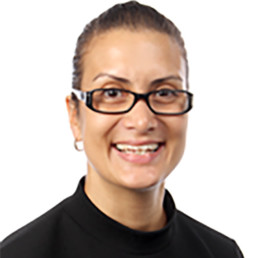
Written by Diana Ohene-Darko
Assistant Head, Pinner Park Primary School; Interim Deputy Headteacher, Holy Trinity Primary School, Finchley; Senior Consultant, Educating for Equality.
Currently, I work in a large London primary school as an Assistant Headteacher. I am a champion for, and have worked extensively on, equality education and children’s rights. We are in a great time of momentum in advocating for racial justice in education. I want to see a curriculum that reflects all the children and families we serve so that there is an inherent sense of identity and belonging.
Introduction
This article aims to shed light on the current situation with regard to race relations in education and diversifying the curriculum. Is diversifying it enough? Considering key documents and events, the article outlines what can be done in order for diversification of the curriculum to take place, or even before it takes place. I offer a perspective on celebrating and appreciating the pupils and staff we serve, rather than ‘tolerating’ each other. In essence, diversity needs to go mainstream.
In May 2020, George Floyd was brutally murdered, and the world was watching. His death sparked a global movement for change, not just for equality but also for equity of outcomes for Black people and people of colour—the global majority1.
In the UK, over 92% of Headteachers are White (DfE, 2021) serving a nationally diverse population. Before even thinking about diversifying, or indeed decolonising the curriculum, there has to be groundwork done in so far as personal reflection for unconscious bias across educational institutions as a whole and for practitioners individually. Time, hard work and commitment are needed to address issues of bias towards the global ethnic majority here in the UK, other disadvantaged groups and those belonging to protected characteristics. Race relations are at a pivotal point in education. Addressing biases is vital to ensuring at least a reasonable understanding of, and appreciation for, all people—and it is about time. By addressing unconscious biases and diversifying the curriculum, education can create a culture of belonging where each individual is celebrated for who they are, rather than being tolerated.
A call for change
It is not enough to say that there are ‘negative calls for decolonising the curriculum’ (Sewell, 2021). No longer can racism be tolerated. No longer can discrimination go unnoticed. No longer can micro-aggressions go unchallenged. Protected characteristics are protected for a reason- they safeguard who we are, our very core of being. Being protected by law carries weight and should be upheld.
How will each child leave school better than when they came? What ‘suitcase’ of learning will they leave with, having spent years in education, ready to travel the world with? How does a child of faith feel represented in the curriculum, for example? What about those from a disadvantaged background? A one-parent family? Those with same-sex parents? How does the curriculum seek to represent the broader population of Britain in all its glory of cultures, ethnicities, traditions, languages and families? Where do children belong? How do educational settings foster a sense of belonging that sees children and young people feel completely at home and at peace with who they are to erase the question of, ‘Where are you from?’ Or worse in response to ‘I was born here’, ‘No but where are you really from?’ In order to demonstrate that we, as practitioners value our learners, the curriculum needs to be ‘truly national’ (Alexander et al. 2015).
The current picture
Some schemes have already sought to address the issue of wider representation, such as the Jigsaw PSHE scheme (2021) and the Discovery RE (2021) programme. In their provision, they offer examples of different families and scenarios that are inclusive of wider society. Some schools are already making headway by creating their own learning journeys for children and young people. They offer urban adventure curricula, for example, and use the new [EYFS] reforms as a basis by which to advance already good practice with a specific focus on what exactly they want children to experience and achieve in order that they become well-rounded individuals, including talking about race. One example of this is Julien Grenier’s extensive work on curricular goals which see children learning to sew a stitch, ride a balance bike and bake a bread roll in Nursery. All aspirational, real-life outcomes for children, no matter their race, background or socio-economic class. On the face of it, there seems no link to race. However, by setting the bar high for all children at the same time, education is, in fact, providing an equality-first experience for our young ones where no learner is left behind.
Consideration of history
The National Curriculum of 1999 (Key Stages One and Two) sought to allow,
‘schools to meet the individual learning needs of pupils and to develop a distinctive character and ethos rooted in their local communities,’ (1999, pp.12).
Then came the (Primary) National Curriculum of 2014 which called for a curriculum that was ‘balanced and broadly based’ (2013, pp.5) promoting the development of the whole child and where teachers were to ‘take account of their duties’ (pp.8) where protected characteristics were concerned. The difficulty is, there are so many unconscious biases at play that even before a diverse curriculum can be devised, attitudes and unconscious biases must be addressed in the first instance as part of initial teacher-training and as part of the wider continuing professional development provision in schools.
The murder of Stephen Lawrence in April 1993 sparked a national debate around race and the impact of structural and institutional racism here in the UK, namely in the police force. As part of its findings, the Stephen Lawrence Inquiry Report (1999), stated that education should value cultural diversity and prevent racism ‘in order better to reflect the needs of a diverse society’ (Macpherson Report, 1999 pp. 382).
With a curriculum that spans British history across both primary and secondary phases, the representation of a generation of Commonwealth workers, including the Windrush generation, who came to help re-build our country post war is barely, if at all, represented. The ‘broad and balanced’ curriculum is one of a vastly colonial view, rather than the narratives of those enslaved as well as those who enslaved others. The same is true for the British rule in India and the impact for Indian citizens and the thousands of soldiers of colour from the Commonwealth who fought for Britain in the Second World War. There is gross under-representation of people of colour and their significant contribution to the British Empire as a whole.
Bringing education into the 21st century
More than twenty-eight years on from Stephen Lawrence and with the brutal murder of George Floyd on 25th May 2020, there is now widespread debate in education once again about the curriculum on offer and how to diversify it. But is diversifying it enough? It seems that colonial attitudes need to be addressed perhaps before diversifying the curriculum. Tackling unconscious (or even conscious) bias, white privilege, micro-aggressions and direct racism may come to be more effective, in other words, decolonising attitudes before decolonising the curriculum.
In the book, ‘I Belong Here, A Journey Along the Backbone of Britain’, the author writes openly about belonging and the ‘deep loneliness and isolation that can affect mental health’ without that sense of belonging (Sethi, 2021). This is in reflective reference to a racist attack she suffered in public as well as countless micro aggressions. Deeply engrained and entrenched racist attitudes need to be challenged. Micro-aggressions need to be challenged. Why? Because it is the right thing to do. The book weaves a narrative that calls for the work needed to be done in order to address micro-aggressions and the wider, long-lasting impact these have on those individuals who suffer them. Equality is everybody’s responsibility.
Imagine how children feel when they do not see themselves reflected in the curriculum- in books and resources, in texts and images, in the learning. There is a deep cavity indeed for children and families of colour. Despite being a global ethnic majority, their experience of the curriculum is all too often white Eurocentric; more specifically that of white, middle-class men, ‘male, pale and stale voices that need to be banished’ (Sperring, 2020 pp. 3).
In order to foster a deep sense of belonging in children, the curriculum needs to address issues of race, in the first instance, as well as other protected characteristics more widely. We are living in a multi-national society with a vast array of languages, cultures and traditions. Even in areas of which can possibly be described as mono ethnic, there still needs to be a national educational commitment to addressing the racial discord that currently exists. Difference should be both appreciated and celebrated. It is not enough to simply ‘tolerate’ other faiths, traditions, beliefs, cultures, customs or backgrounds. Tolerance is such a low bar.
The Black Curriculum Report (Arday,2021) highlights the drawbacks of the current curriculum, more specifically the history curriculum, which distinctly omits Black history, ‘in favour of a dominant White, Eurocentric curriculum, one that fails to reflect our multi-ethnic and broadly diverse society.’ (pp.4). It goes further to make several recommendations, in more detail than the Stephen Lawrence Inquiry Report, for example:
‘conventions of Britishness will always require reconceptualising to incorporate all of our histories and stories. Our curriculum requires an acknowledgement of the ethnic, cultural and religious diversity that comprises the tapestry of the British landscape and the varying identities associated within this.’ (pp.5)
What it calls for is an evaluation of the curriculum to include Black history in order that there be, ‘greater social cohesion and acceptance of racial and ethnic difference’ (pp.4).
By offering a ‘broad and balanced’ curriculum that is tailored to the demographics of the school population, you are reinforcing a deep sense of identity and belonging. Children and young people will feel seen, valued and understood for who they are, not just as individuals, but as a part of their communities. How empowering for our children and young people of today!
Rather than continuing the old-fashioned approach of British history, we should be teaching children and young people to be critical thinkers, to assess and appraise the evidence and different perspectives so that they can come to their own conclusions. No longer is it adequate enough to have diversity days or Black history month; to teach just one perspective. People of colour do not just exist for one day or one month of the year. There are countless scientists, historians and academics of colour who have made huge contributions to society as we know it. For example, although Thomas Edison may have invented the lightbulb as we know it, Lewis H. Latimer made a considerable contribution towards this. However, in those days it was rare for a person of colour to be attributed with such distinguished achievement. Another example is Wangari Maathai, Nobel Peace Prize laureate, known for her environmental activism in Kenya, ‘It’s the little things that citizens do. That’s what will make the difference. My little thing is planting trees.’ (Wilson, 2018). Where are they in the national curriculum?
In the Oxford Learner’s Dictionary, ‘national’ is defined as ‘connected with a particular nation; shared by a whole nation’ (Oxford Learner’s Dictionary). If education seeks to indeed connect the nation, and if it wants education to be a shared experience as a nation, then there is more work to be done. Diversity needs to go mainstream.
Young people need to know that who they are makes a difference. Not who they are because of an out-of-date system that continues to advance the privileged few, rather, who they are without the labels that are thrust upon them. They are not their labels. They are ‘humxns’2(Ricketts, 2021) who make a valid and significant contribution every day. Diversifying the curriculum should reflect this. Decolonising attitudes is the right thing to do- creating safe spaces to open up dialogue, offering long-term quality staff training, enriching the curriculum with a broader representation of different communities, making equality training mandatory for initial teacher training.
Data from the Department of Education shows that 92.7 per cent of headteachers and 89.7 per cent of deputy and assistant headteachers in the UK are white (DfE,
2 Humxn is the gender-neutral term for human. Urban Dictionary: humxn (2021) Urban Dictionar. Available at: https://www.urbandictionary.com/define.php?term=humxn. 2021). These figures show that all-white leadership teams run the majority of schools in the country, which is not necessarily reflective of the communities they serve, or even our nation as a whole.
More needs to be done to actively recruit and retain professionals from ethnically diverse groups. For example, anonymising applications for name, age, gender and university to name a few categories; randomising responses to scenario questions and eliminating the personal statement response so that colleagues can show what they would do as opposed to what they have done, thereby showing their potential against their experience and expertise, skills and qualifications.
Conclusion
These are just a few starting points. Essentially, good, quality equality work means hard work. It means making the uncomfortable comfortable. It means braving being vulnerable. It means addressing racism head on so that attitudes can change, as well as behaviours. ‘In this world there is room for everyone’ (Chaplin, 1940). Children should leave with a rich tapestry woven from learning and experiences that celebrate who they are, that give them every chance of further success in life, that elevate them in their sense of self-worth and identity. When a child asks, ‘Where do I belong?’ you can confidently say, ‘Here.’
References
Alexander, C., Weekes-Bernard, D., & Chatterji, J. (2015) History Lessons: Teaching Diversity in and through the History National Curriculum. London: Runnymede Trust. http://www.runnymedetrust. org/ uploads/History%20Lessons%20-%20Teaching%20 Diversity%20In%20and%20Through%20 the%20
History%20National%20Curriculum.pdf.
Arday, J. (2021) The Black Curriculum, Black British History in the National Curriculum Report 2021. pp.4-5.
Charlie Chaplin, The Great Dictator speech, taken from the film, The Great Dictator (1940) available at: https://www.charliechaplin.com/en/articles/29-the-final-speech from-the-great-dictator
Department for Education (2013) The National Curriculum in England: Framework Document. Available at: https://www.gov.uk/government/
uploads/system/uploads/attachment_data/ file/210969/NC_framework_document_- _FINAL.pdf (pp.5, pp.8)
Department for Education data available at: https://www.ethnicity-facts figures.service.gov.uk/workforce-and-business/workforce-diversity/school-teacher workforce/latest
Discovery RE Scheme Of Work | Discovery RE (2021) Discovery Scheme of Work. Available at: https://discoveryschemeofwork.com/ (Accessed: 16 September 2021). Primary and Secondary PSHE lessons fulfilling RSE | Jigsaw PSHE Ltd (2021) Jigsaw PSHE. Available at: https://www.jigsawpshe.com/ (Accessed: 15 September 2021).
Macpherson Report (1999), as part of The Stephen Lawrence Inquiry available at: https://assets.publishing.service.gov.uk/government/uploads/system/uploads/attach ment_data/file/277111/4262.pdf pp.382
Oxford Learner’s Dictionary, ‘National’ definition, available at:
https://www.oxfordlearnersdictionaries.com/definition/english/national_1?q=national
Ricketts, R. (2021) DO BETTER, SPIRITUAL ACTIVISM for Fighting and Healing from WHITE SUPREMACY
Sethi, A (2021) I Belong Here: A Journey Along the Backbone of Britain. Bloomsbury, London. ISBN 9781472983930.
Sewell, T. (2021) Commission on Race and Ethnic Disparities: The Report, can be found at:
https://assets.publishing.service.gov.uk/government/uploads/system/uploads/attach ment_data/file/974507/20210331_-_CRED_Report_-_FINAL_-_Web_Accessible.pdf
Sperring, K. (2020) Decolonising the curriculum: male, pale and stale voices that need to be banished. Available at: https://uclpimedia.com/online/lets-banish-the hierarchy-topped-by-male-pale-and-stale-voices-and-decolonise-the-curriculum
The Equality Act 2010 guidance, can be found at:
https://www.gov.uk/guidance/equality-act-2010-guidance
The National Curriculum 1999 available at:
http://www.educationengland.org.uk/documents/pdfs/1999-nc-primary-handbook.pdf. pp. 10, pp.12.
Wilson, J. (2018) Young, Gifted and Black. Wide Eyed Editions. ISBN978-1-78603- 983-5.
Our Pregnancy and Maternity Toolkit for Schools

Written by Emma Sheppard
Emma founded The MTPT Project, the UK's charity for parent teachers, in 2016 when on maternity leave with her first child. She has 12 years experience as an English teacher, Lead Practitioner and ITT Lead, and now runs The MTPT Project full time.
The research, legal practice and variety of experiences surrounding the protected characteristic of pregnancy and maternity is rich and diverse, but perhaps because it does not (often) include our students in the way other protected characteristics do, resources specific to the education sector are hard to come by. We do not, for example, talk about diversifying our curriculum to include more stories of pregnancy and motherhood. We don’t talk about ensuring that our workforce includes pregnant role models for our students. We don’t organise student voice groups discussing how pregnancy and maternity affect pupils’ day to day school lives.
Provision for pregnancy and maternity as a protected characteristic is almost always in relation to staff members within our schools, nurseries and colleges. And it’s a fairly important demographic: the majority of teachers are women who may become pregnant at some point; half our workforce are parents to children under the age of 18, and 3.4% of teachers (around 11,500) go on maternity leave each year – that’s an average of two per school. But isn’t the experience of being a parent and a teacher the remit of our HR managers, rather than colleagues, middle and senior leaders?
Given the large number of parents in our teacher workforce, the protected characteristic of pregnancy and maternity – and the many years of family life that will follow – is an area about which leaders should be familiar and informed if they are keen to create positive working environments. As in any other industries, failing to understand and therefore meet the needs of our pregnant and mother team members leads to staff attrition, negative school cultures, and a motherhood penalty in the form of a gender pay gap, gender disparity in school leadership and discriminatory cultures that we present to our students as the reality that they will inherit.
The DiverseEd Pregnancy and Maternity Toolkit is an evolution of the research, resources, networks and articles that supported the establishment of The MTPT Project – the UK’s only charity for parent teachers. It provides the reports, blogs and contacts that The MTPT Project community return to again and again to inform their work and empower their community. When you start exploring, you’ll realise what a rabbit hole we have tempted you to fall into: 25 pages of an ASCL Maternity and Adoption Leave guide; ways to support breastfeeding teachers as they return to work; the experience of undergoing fertility treatment as a teacher; the ins and outs of shared parental leave; how to avoid direct and indirect discrimination… At first you may be overwhelmed by what you didn’t know you didn’t know…!
Don’t be put off: start with the needs of the colleagues in your school – whether they be expectant mothers, fathers or non-binary parents, undergoing fertility treatment, returning to work, completing professional development on leave. Use the DiverseEd toolkit to open up dialogue and get everyone feeling excited about how enjoyable making this next step in your personal and professional lives will be – learning to support, and be empowered, by your pregnant, expectant and parent colleagues.
Want to do more to support your colleagues? Contact The MTPT Project about our schools’ membership so that the experts can guide you through the relevant documents, and how to implement impactful practice in your school.
Groupthink is a trap: businesses do far better when there is diversity of thought

Written by Neil Bradbrook
Neil Bradbrook is managing director of Falkirk-based Ahead Business Consulting and a Fellow of the Institute of Leadership & Management.
When it comes to running a business, nothing is more important than diversity of thought. No matter how good a leader you think you are, it is the team you assemble around you that will help you succeed.
My business partner and I come from different backgrounds and that helps when we are making business decisions. We come to similar conclusions, but get there in different ways, challenging each other as we go.
It is not nearly enough, though. We might have to make the decisions, but we do not have all the answers, which is why it is so important that we listen to the team around us. Only when we hear the suggestions they are making and the solutions they are coming up with can we make a truly informed choice.
As human beings we are all social animals who like to interact and do things together. That applies in the workplace just as much as anywhere else. If you can create a working environment where people enjoy what they do and feel empowered to air their views, everybody benefits from the power of the team.
Taking on board views that differ widely from your own can be a challenge but looking at a problem from every possible angle is the way to find the best solutions. That means surrounding yourself with people from as many different backgrounds as possible rather than hiring in your own image.
That takes a conscious effort – we have all heard of unconscious bias, right? – and so self-awareness is key. No matter what position you are in – even if you are in charge of a huge global enterprise, as Elon Musk is at Tesla – you cannot ever think it is all about you. The very best senior managers are the ones that realise they might not be doing everything right.
A good manager should always be prepared to change their mind when presented with views that differ from their own. That is why listening is so important. Listen to what your employees have to say, listen to your customers, take advice. You do not have to act on every single thing but listen – and listen well – before making that call.
Trying to force people into your own mould will never work; embracing them as they are and seeking out the value they can bring, will. That can be difficult. Some team members can struggle to engage in a way you understand. They are the ones you have to invest even greater effort into listening to, because only by accepting that everyone can be part of the team will you have a truly inclusive organisation.
If you do not make an effort to show you are genuinely inclusive there are some people you are going to turn off. You will be the loser in that situation because you will be missing the opportunity to find out what they could add.
Some managers find it hard to empower the individuals in their team. That is understandable: few people are given the training they need to take on a management position, with most being promoted simply because they excelled in the role they were already in.
Without being told otherwise, it is easy to fall into the trap of thinking that with power comes responsibility and with responsibility comes the need to make all decisions alone.
But if team members feel they understand your organisation’s vision and their role within it – and that they have the autonomy and opportunity to contribute and make a difference – you get so much more out of them.
That is to everyone’s benefit. If you are all pulling in the same direction, and everyone knows what the effort is being put in for, it will be so much more effective than if you just have one or two people doing it.
I have always been a firm believer that the power of the team is far greater than that of the individual; if you get the team right, collectively you will be so much stronger than each of you on your own.

